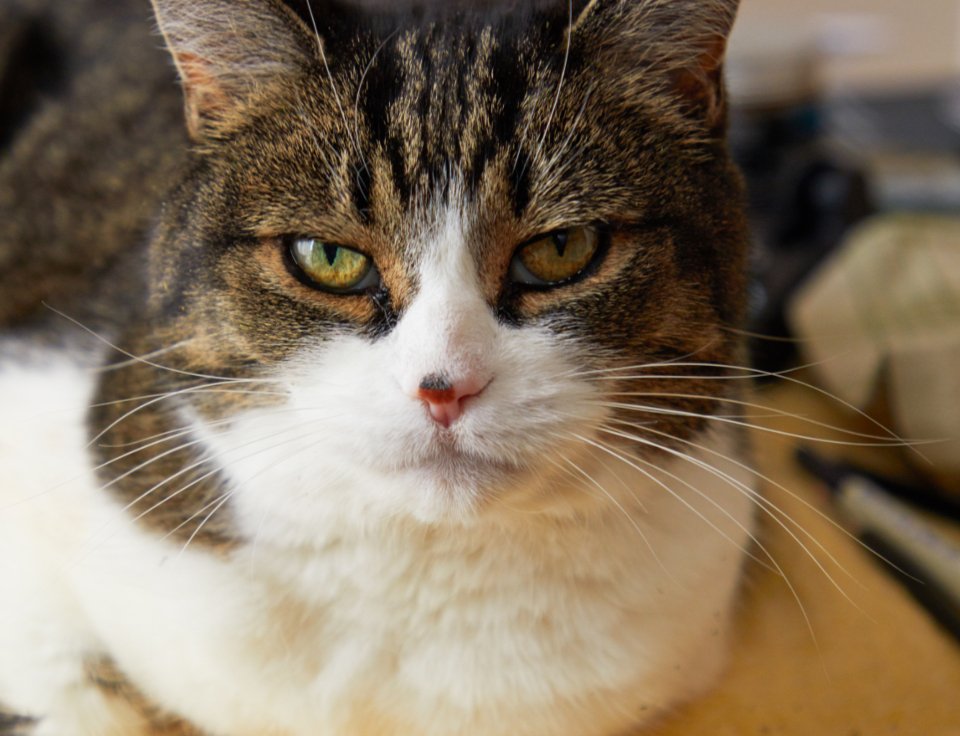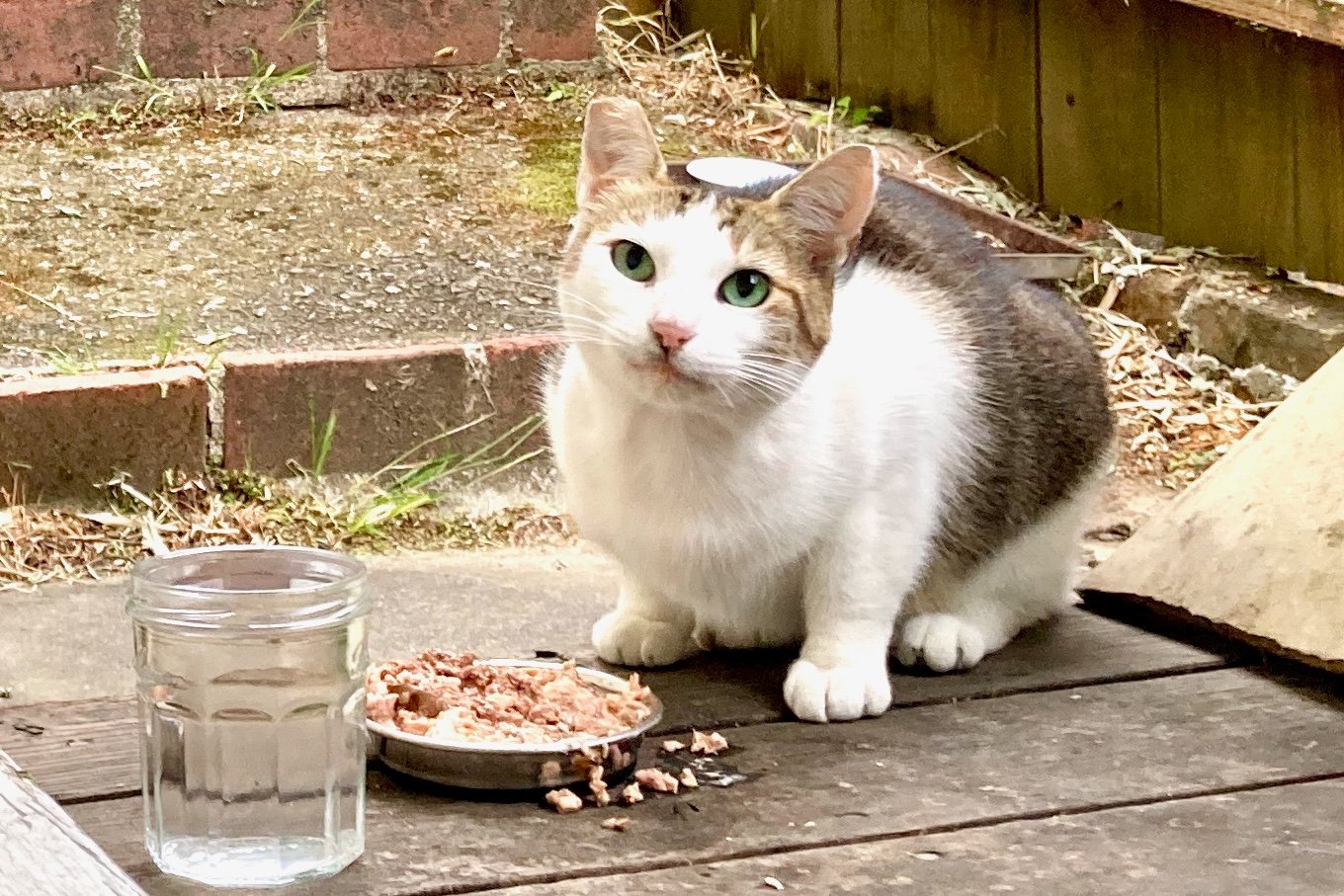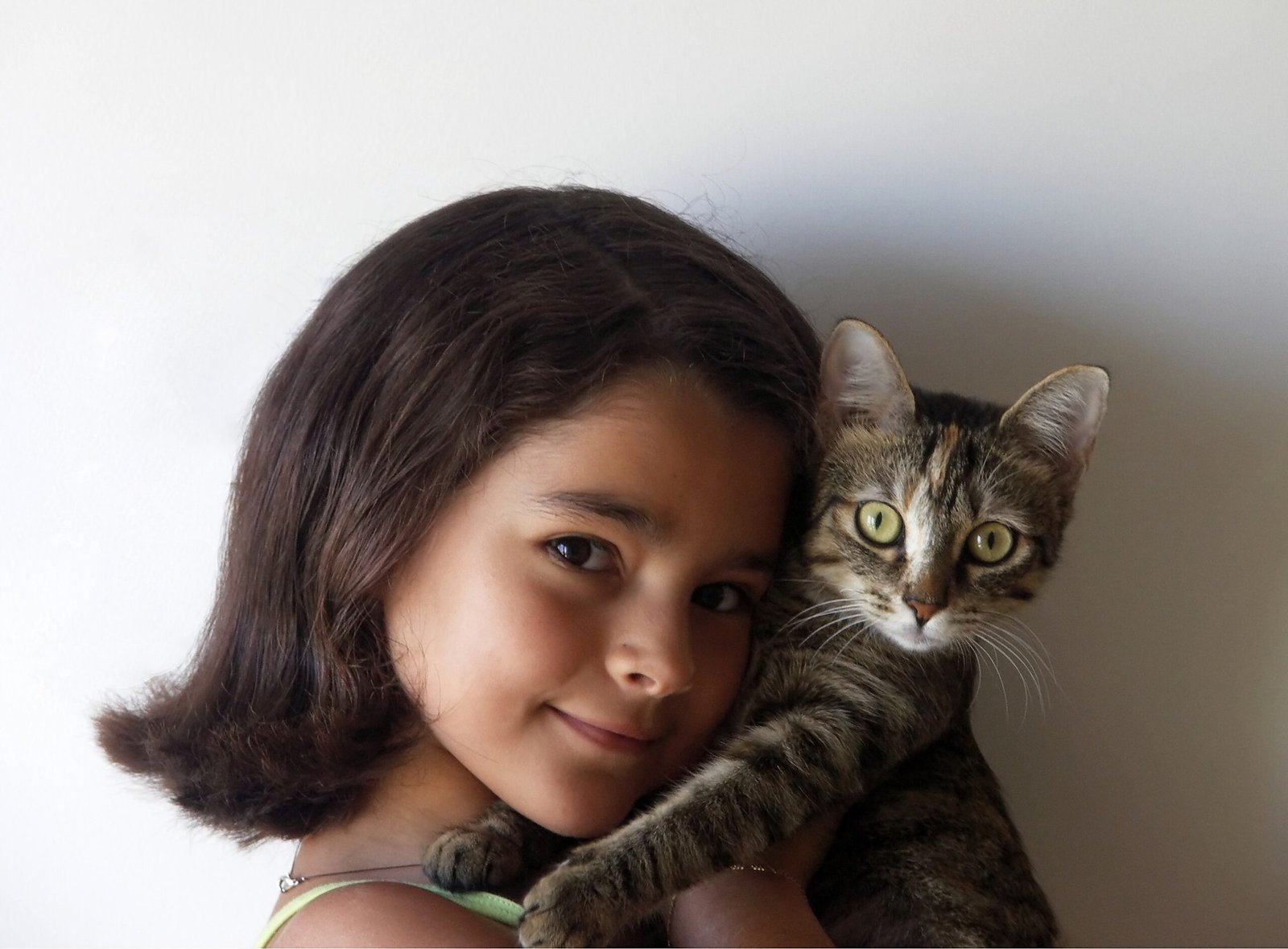Did you know that sharing your home with an indoor cat can be one of the most rewarding relationships you’ll ever experience? It’s true—your cat may seem mysterious and independent, but deep down, they crave connection just like we do. Imagine building a secret friendship with a creature who purrs when you’re near and trusts you more than anyone else. Strengthening that invisible bond isn’t about grand gestures; it’s about the little things you do every day. Let’s dive into twelve surprisingly simple habits that can transform your cat from a distant roommate to a cuddly best friend. You might be surprised how much your cat can love you back.
Spend Dedicated Playtime Every Day

Cats are natural hunters, even if they never set a paw outdoors. Indoor life can get dull, so daily playtime is like their own little adventure. Grab a feather wand or laser pointer and watch your cat’s eyes light up with excitement. The key is consistency—just ten minutes a day goes a long way. You’ll find your cat waiting for playtime, maybe even dragging their favorite toy over to remind you. This active time helps release pent-up energy, which can prevent destructive behavior. Play isn’t just about exercise; it’s a language of love for your feline. Plus, laughing together at your cat’s silly antics is the best stress relief around.
Respect Their Personal Space

Cats are famous for their love of solitude. If your cat retreats to a quiet corner or disappears under the bed, respect their need for space. Forcing attention only builds mistrust. Instead, let them come to you when they’re ready. Over time, they’ll realize you’re someone who understands their quirks, and that trust is the foundation of any strong bond. Think of it like a dance—sometimes you lead, sometimes you step back. Watch for signs like a slow blink or a gentle headbutt; these are your cat’s way of inviting affection. Remember, patience always wins with felines.
Establish a Routine

Cats love predictability—it’s comforting in a world where so much feels out of their control. Try to feed, play, and cuddle your cat around the same times each day. When they know what to expect, they feel secure, and that security deepens your bond. Imagine how you’d feel if dinner was always a surprise or bedtime changed every night! If your schedule is unpredictable, even small rituals like a morning chin scratch or evening treat can go a long way. Routines aren’t just for cats; they make life smoother for you, too.
Engage in Gentle Grooming Sessions

Regular brushing isn’t just about keeping fur off your sofa—it’s a powerful way to bond. For many cats, gentle grooming feels like the comfort of a mother’s tongue. Start slow, especially if your cat isn’t used to being brushed. Focus on areas they enjoy, like the cheeks or back, and avoid sensitive spots at first. Over time, grooming can become a soothing ritual you both look forward to. Plus, it’s a great chance to check for any skin issues or mats. If your cat rolls over and purrs, you’ll know you’ve hit the sweet spot.
Talk to Your Cat Often

You might feel a little silly at first, but talking to your cat builds a sense of companionship. Cats might not understand every word, but they know your tone and associate it with comfort. Try narrating your day or softly calling their name when you walk into a room. Some cats even “talk back” with trills or meows. Over time, you’ll develop your own secret language, full of inside jokes and shared glances. Your cat learns to recognize your voice as a sign of safety and affection. Don’t be surprised if they start greeting you at the door!
Use Positive Reinforcement

Cats respond best to rewards, not punishment. If your cat does something you like—using the scratching post instead of the sofa, for example—offer a treat or extra petting. Soon they’ll connect good behavior with positive outcomes, and your bond will grow stronger. Avoid yelling or spraying water; these tactics only make cats fearful. Instead, focus on encouragement and patience. Think of it like raising a child—you celebrate their successes and gently guide them away from trouble. Your cat will trust you more when they know they’re safe from harsh reactions.
Offer a Variety of Enrichment Activities

Indoor cats need mental stimulation as much as physical exercise. Rotate toys every week to keep things interesting. Try puzzle feeders, cardboard boxes, or even a safe window perch for bird-watching. Simple changes, like a new scratching post or a paper bag to hide in, can spark curiosity and joy. Watch which activities your cat prefers—some love chasing balls, others prefer quiet hideaways. The more you cater to their interests, the more they’ll feel understood and cherished. Enrichment is the secret ingredient to a happy, well-adjusted cat.
Share Quiet, Relaxed Moments

Sometimes the best bonding happens when you’re both just relaxing together. Sit quietly with your cat while you read, watch TV, or even meditate. Let them approach on their terms—maybe curling up beside you or stretching out on your lap. These peaceful moments teach your cat that your presence is safe and comforting. You might notice subtle signs of trust, like a slow blink or a gentle purr. Over time, these quiet rituals create deep emotional connections. It’s like sharing a silent conversation only the two of you understand.
Offer Special Treats (In Moderation)

Everyone loves a little indulgence, and your cat is no exception. Find a treat they adore, and reserve it for special bonding times. Maybe it’s a tiny piece of cooked chicken or a crunchy cat treat after playtime. Giving treats by hand can help shy cats feel more comfortable with your presence. Just remember, moderation is key—too many treats can lead to health issues. The goal is to make treats a positive part of your relationship, not a daily expectation. When used wisely, treats can become moments of shared joy.
Try Clicker Training

Believe it or not, cats can learn tricks and commands just like dogs—with the right motivation. Clicker training uses a small noise (the “click”) to mark good behavior, followed by a reward. Start with simple actions, like sitting or high-fiving, and keep sessions short and upbeat. Training builds your cat’s confidence and gives you both a fun way to interact. Plus, it challenges their mind and strengthens your communication. Even if your cat never learns to fetch, the process itself is a powerful bonding experience.
Maintain a Calm Home Environment

Cats are sensitive to loud noises and sudden changes. Try to keep your home as peaceful as possible, especially when your cat is adjusting to new routines. If there’s construction, guests, or other disruptions, create a safe space where your cat can retreat. Play soft music or use calming pheromone sprays during stressful times. The more predictable and serene your home feels, the more your cat will relax and trust you. A calm environment is like a warm blanket for your cat’s nerves.
Let Them Explore Safely

Indoor cats are natural explorers, always curious about new sights and smells. Give them safe spaces to investigate—like a cat tree, shelves, or tunnels. Rotate their toys and rearrange their environment occasionally to keep things fresh. Some people even train their cats to walk on a leash indoors! Exploration satisfies your cat’s instincts and prevents boredom. When you encourage their curiosity, you show that you care about their happiness and well-being. It’s like giving them a tiny adventure within the safety of your home.
Watch and Learn Their Body Language

Every cat has a unique way of communicating. Pay close attention to their tail flicks, ear positions, and the way they move. A swishing tail might mean excitement or irritation, while slow blinks are a sign of affection. The more you “listen” to your cat’s body language, the easier it is to respond appropriately. This attentiveness makes your cat feel seen and respected. Over time, you’ll become an expert at reading their moods and anticipating their needs. It’s like learning a new language without words.
Offer Vertical Spaces

Cats love to climb and perch—they feel safer and more confident when they can observe their world from above. Provide sturdy cat trees, shelves, or window perches around your home. These vertical spaces give your cat exercise and a sense of security. You might notice your cat watching you from their high perch, tail gently swaying. By giving them these viewpoints, you’re showing that you understand their instincts. Vertical spaces are like private castles for your feline friend.
Make Vet Visits Less Stressful

Nobody likes the vet, but regular checkups are crucial for your cat’s health. To ease the stress, leave the carrier out at home so it feels familiar, not like a trap. Place a soft blanket and a few treats inside to create positive associations. Talk softly to your cat during car rides and reward them after the visit. When you make vet trips as gentle as possible, your cat learns to trust you through every experience—even the scary ones. This builds lasting confidence in your relationship.
Use Slow Blinks to Show Affection

Cats communicate affection with their eyes. If your cat blinks slowly at you, try returning the gesture. This “cat kiss” is a powerful signal of trust and love. You might feel a little goofy blinking at your cat, but it works! Over time, your cat may start to initiate these slow blinks, especially when they feel safe and content. Such small moments can strengthen your bond more than words ever could. It’s a secret handshake only you and your cat understand.
Keep Their Litter Box Clean

A clean litter box is more than just good hygiene—it’s a sign of respect. Cats are fastidious and dislike dirty spaces. Scoop the box daily and change the litter regularly. Place the box in a quiet, accessible spot, away from food and busy areas. When your cat sees that you care about their comfort, they’ll feel more at ease in your home. Cleanliness in this area can prevent stress-related behavior issues, like inappropriate elimination. It’s a simple act that speaks volumes to your cat.
Respect Their Unique Preferences

Every cat is an individual. Some love belly rubs, others prefer a scratch behind the ears. Pay attention to what your cat enjoys and what makes them uncomfortable. Don’t force affection or play if they’re not in the mood. Flexibility and attentiveness show that you value their feelings. When you tailor your interactions to their preferences, your cat feels truly understood. This mutual respect is the heart of a lasting friendship.
Share Your Bed—If They Want

Many cats love to snuggle at night, while others prefer their own space. If your cat chooses to sleep with you, consider it the ultimate compliment. Sharing a bed can deepen your emotional connection—there’s nothing quite like waking up to a gentle purr or a warm furry body curled by your side. If your cat prefers their own bed, respect that choice and offer cozy alternatives. The important thing is to welcome them without pressure. Nighttime routines can become some of your most cherished moments together.
Celebrate Special Moments Together

Marking milestones—like adoption anniversaries or birthdays—can make your cat feel extra special. Bake a cat-safe treat, buy a new toy, or set aside extra cuddle time. Even small celebrations reinforce the idea that your cat is a cherished member of the family. Take plenty of photos and create memories you’ll both treasure. These joyful moments add richness to your lives and deepen your connection. After all, every day with your cat is worth celebrating.
Show Unconditional Patience and Love

Cats can be unpredictable—aloof one moment, affectionate the next. The most powerful habit you can build is patience. Love your cat for who they are, quirks and all. When accidents happen or moods shift, respond with understanding instead of frustration. Over time, your gentle consistency will build a foundation of trust that nothing can shake. The beauty of bonding with a cat is in the journey, not the destination. Every tiny gesture of patience brings you closer together.
Hi, I’m Bola, a passionate writer and creative strategist with a knack for crafting compelling content that educates, inspires, and connects. Over the years, I’ve honed my skills across various writing fields, including content creation, copywriting, online course development, and video scriptwriting.
When I’m not at my desk, you’ll find me exploring new ideas, reading books, or brainstorming creative ways to solve challenges. I believe that words have the power to transform, and I’m here to help you leverage that power for success.
Thanks for stopping by, Keep coming to this website to checkout new articles form me. You’d always love it!





